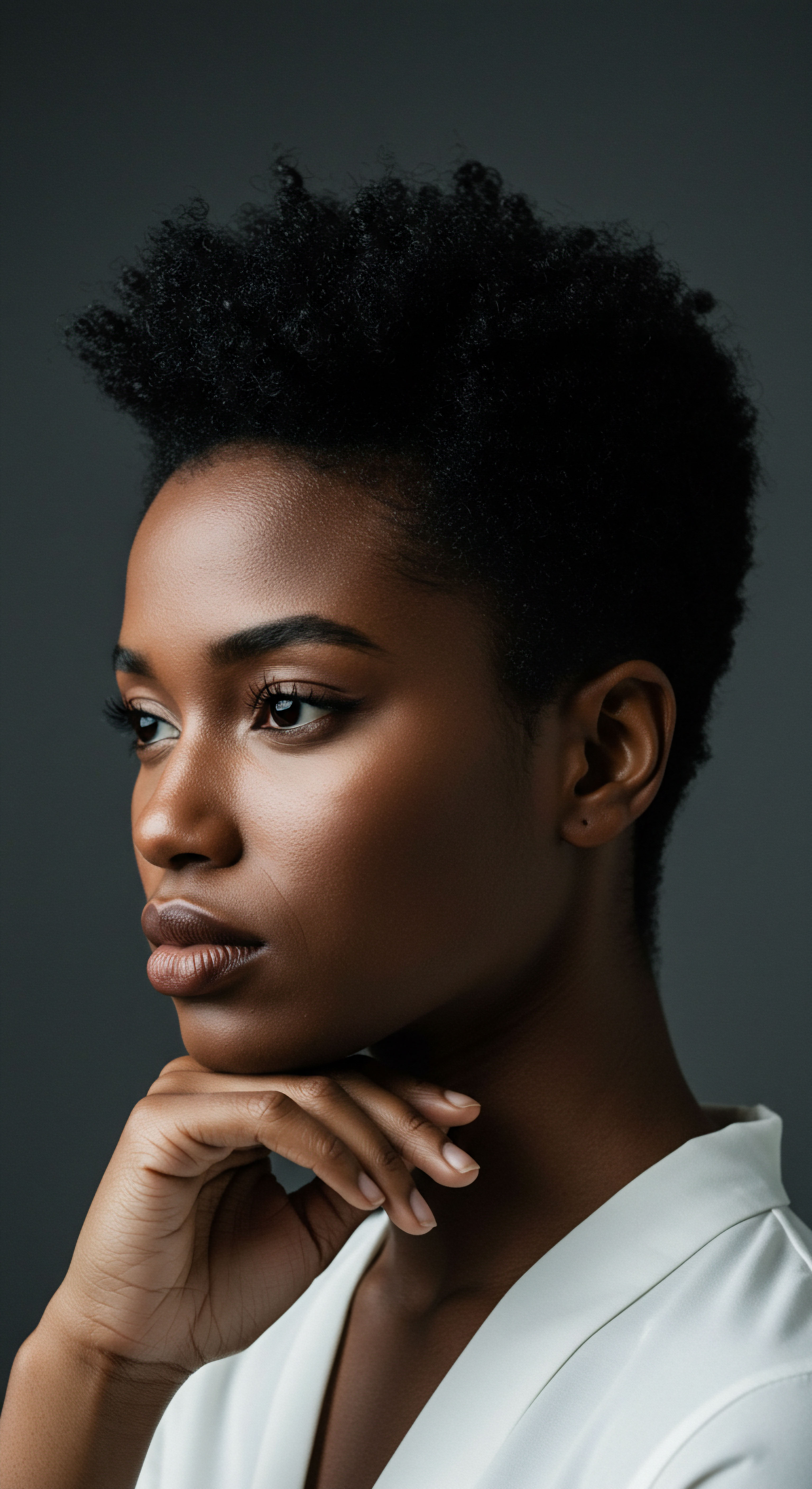
Roots
The quiet rustle of fabric against hair, a familiar comfort for many, holds a deeper narrative than often considered. For those with textured hair, particularly within Black and mixed-race communities, head coverings are more than simple adornment or practical protection; they are woven into the very fabric of identity, history, and daily existence. Yet, beneath the layers of cultural significance and personal style lies a subtle, often overlooked interaction ❉ the texture of these coverings and their potential to influence the delicate health of our hair, sometimes even contributing to conditions like traction alopecia. Our exploration begins at the very root, delving into the intrinsic nature of textured hair and the foundational forces that shape its well-being.

The Architecture of Textured Hair
Each strand of textured hair possesses a unique structural blueprint, setting it apart from its straighter counterparts. Unlike hair with a more uniform, cylindrical cross-section, coily and kinky hair often exhibits an elliptical or flattened shape, which contributes to its characteristic curl pattern. This unique geometry means that the hair shaft naturally has more points of curvature and twists along its length. These curves, while creating stunning spirals and coils, also present inherent vulnerabilities.
The cuticle, the protective outer layer of the hair strand, comprises overlapping scales. On a highly curved strand, these scales may not lie as flat, rendering the cuticle more susceptible to lifting and damage from external forces. This anatomical reality dictates a higher propensity for dryness and breakage in textured hair, as moisture escapes more readily from a compromised cuticle.
Beyond the visible curl, the very density and arrangement of hair follicles on the scalp also play a role. While not exclusive to textured hair, variations in follicle density can influence how mechanical stress is distributed. A dense crown of curls, while magnificent, means many individual strands are vying for space and interacting with each other, as well as with any external covering.

Hair’s Cycle and External Influences
Understanding the hair growth cycle is fundamental to comprehending hair health. Each follicle moves through three main phases ❉ Anagen (active growth), Catagen (transition), and Telogen (resting and shedding). Disruptions to this natural rhythm can lead to various forms of hair loss.
When external forces, such as persistent tension or friction, repeatedly interfere with the anagen phase, they can prematurely push hair into the resting or shedding stages, or even damage the follicle itself. This mechanical interference is a key player in the development of traction alopecia.
External factors, beyond the internal symphony of hormones and genetics, exert a significant influence. Environmental aggressors, styling practices, and indeed, the materials that come into contact with our hair daily, all leave their mark. The very act of covering the head, while offering protection from sun or cold, or serving a deeply held cultural or religious purpose, introduces a new set of interactions that must be thoughtfully considered.
The intrinsic curvature of textured hair renders its cuticle more susceptible to friction-induced damage.

Can Fabric Roughness Compromise Hair Health?
The surface characteristics of head covering fabrics directly influence their interaction with hair. Fabrics are not uniformly smooth; they possess varying degrees of surface roughness and fiber arrangements. When hair, particularly textured hair with its inherent bends and turns, rubs against a rough fabric, the friction generated can abrade the delicate outer cuticle layer.
This abrasive action can lift, chip, or even remove cuticle cells, leaving the inner cortex of the hair strand exposed and vulnerable. This physical wear and tear can lead to increased porosity, dryness, frizz, and ultimately, breakage.
Consider the difference between a finely woven silk and a coarsely woven cotton. Silk, with its smooth, tightly packed protein fibers, presents a lower coefficient of friction to the hair shaft. Cotton, while breathable, often has a more irregular fiber arrangement and a higher coefficient of friction, particularly when dry.
This means that with every movement, every shift of the head, a cotton fabric might exert more damaging drag on the hair cuticle compared to silk. This subtle, continuous friction, repeated over hours or days, can cumulatively degrade the hair’s structural integrity.
| Hair Type Feature Curvature |
| Interaction with Fabric Increased contact points and localized pressure |
| Potential Hair Health Outcome Higher susceptibility to friction, cuticle lifting |
| Hair Type Feature Porosity |
| Interaction with Fabric More absorbent of fabric moisture, less resilient |
| Potential Hair Health Outcome Dryness, brittleness, increased breakage risk |
| Hair Type Feature Diameter |
| Interaction with Fabric Finer strands may be more delicate |
| Potential Hair Health Outcome Greater vulnerability to mechanical stress |
| Hair Type Feature Understanding these interactions aids in selecting optimal head covering materials for hair preservation. |

The Lexicon of Hair Well-Being
To truly care for textured hair, a shared understanding of its specific language is essential. Terms like Porosity, referring to hair’s ability to absorb and retain moisture, or Elasticity, its capacity to stretch and return to its original state, are not mere buzzwords. They are scientific descriptors that guide effective care.
Hair that is highly porous, for example, might readily absorb moisture from a damp cotton head covering, but also lose it just as quickly, leading to dehydration and brittleness. Similarly, hair with low elasticity is less forgiving under tension, making it more prone to snapping when caught or pulled by fabric.
When we speak of “protective styles,” we are referring to specific configurations that minimize manipulation and shield the hair ends, thereby reducing external stress. Yet, even these styles, when paired with certain head coverings, can inadvertently become sources of tension or friction. The delicate balance lies in choosing fabrics that work in harmony with the hair’s natural properties, rather than against them.

Ritual
Stepping from the foundational understanding of hair’s nature, we now turn our gaze toward the daily and nightly rituals that shape our hair’s destiny. For many, the act of covering one’s head is not simply a fleeting gesture; it is a deeply ingrained practice, a part of a larger, cherished tradition, or a pragmatic choice for hair preservation. This section invites us to consider how these practices, particularly the selection and use of head covering fabrics, can either safeguard our strands or, if unknowingly misaligned with hair’s delicate needs, contribute to its vulnerability. The practical wisdom we seek here involves a thoughtful discernment of materials and methods, allowing our hair care practices to truly serve its well-being.

The Daily Cloak ❉ Head Coverings and Their Hidden Pressures
Head coverings, whether worn for cultural observance, religious devotion, or simply for fashion and protection, introduce a continuous point of contact with the hair. The very act of securing a head wrap, a turban, or a scarf can, if not done with mindful attention, exert persistent tension on the hair follicles along the hairline and nape. This constant pulling is the direct mechanical force that underpins traction alopecia. While the initial cause of traction alopecia is often attributed to tight hairstyles, the addition of a head covering, particularly one with a less forgiving texture or a method of tying that adds further constriction, can significantly exacerbate this pressure.
Consider the case of certain traditional headwraps that require meticulous folding and tying to maintain their shape and position. The repetitive friction of the fabric against the hair, especially where the wrap is tautest, can become a silent antagonist. This is particularly true for hair that is already dry or prone to breakage. The collective weight of some thicker, denser fabrics, when combined with the tension of the wrap, can also add to the gravitational pull on the hair roots over time.
The choice of head covering fabric significantly impacts hair’s exposure to friction and tension.
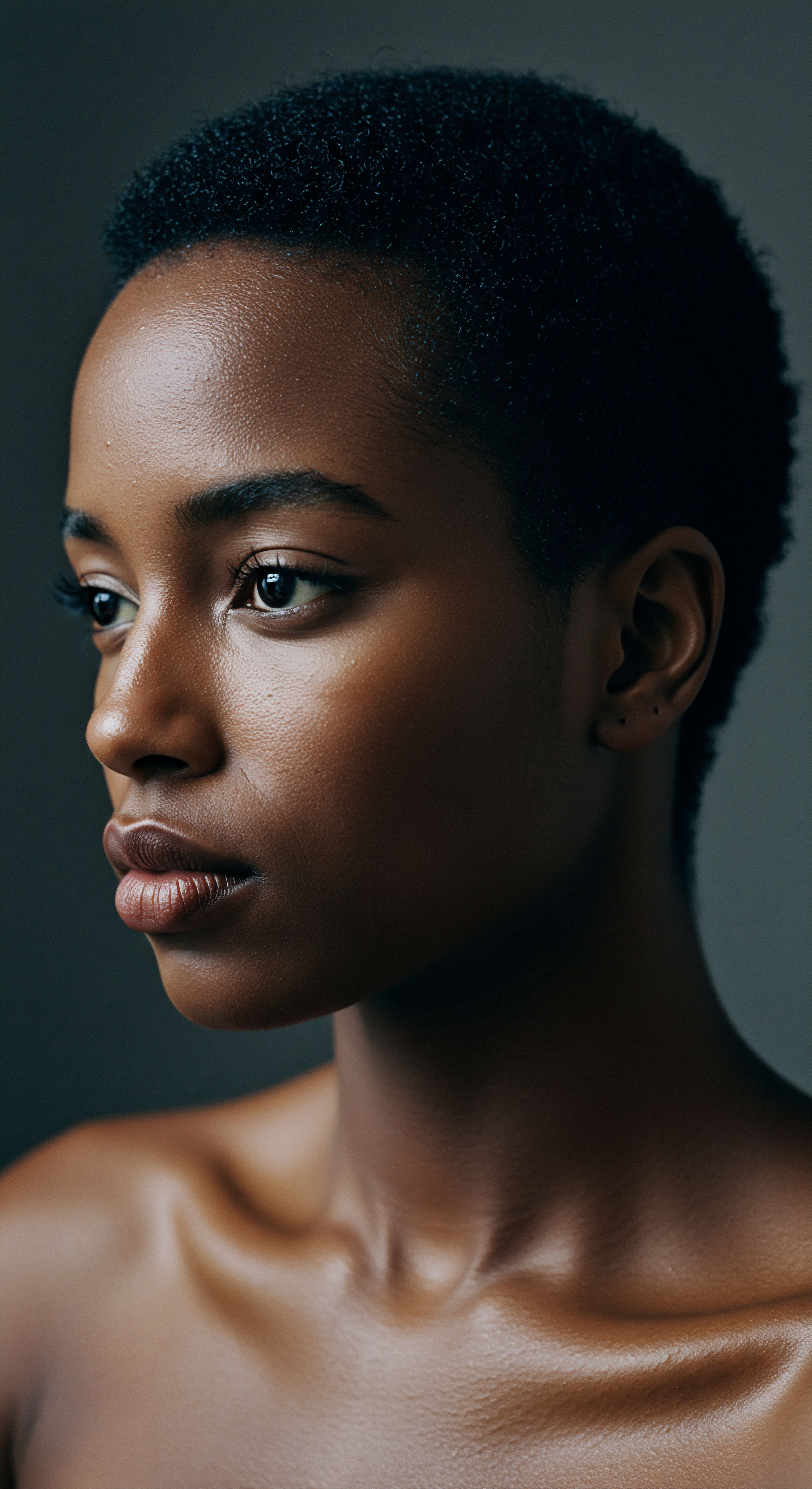
Do All Fabrics Present the Same Risk to Hair?
The answer resides in the subtle differences in fiber composition and weave. Not all fabrics are created equal when it comes to their interaction with delicate hair strands.
- Cotton ❉ A ubiquitous natural fiber, cotton is breathable and absorbent. While these qualities are desirable in many contexts, its absorbent nature can draw moisture from the hair, leaving it dry and more susceptible to breakage. The microscopic fibers of cotton, when viewed closely, possess a slightly rough, irregular surface that can create friction against the hair cuticle. This friction, over time, can lead to abrasion and damage, particularly for textured hair, which already has a more fragile cuticle structure.
- Polyester and Nylon ❉ These synthetic fibers are often lauded for their durability and affordability. However, they can sometimes create a static charge when rubbed against hair, leading to increased frizz and tangling. While some synthetic blends can be quite smooth, others may have a less yielding surface that contributes to friction. Research by El-Messiry et al. (2017) highlighted how polyester textiles generated higher electrostatic charges when slid against hair, potentially contributing to further cuticle damage.
- Silk and Satin ❉ Often recommended for hair health, silk (a natural protein fiber) and satin (a weave, typically from polyester or rayon, designed to mimic silk’s smoothness) possess a smooth, slippery surface. This characteristic minimizes friction against the hair shaft, allowing strands to glide rather than snag. This reduced friction helps preserve the hair’s cuticle layer, retaining moisture and preventing mechanical damage.
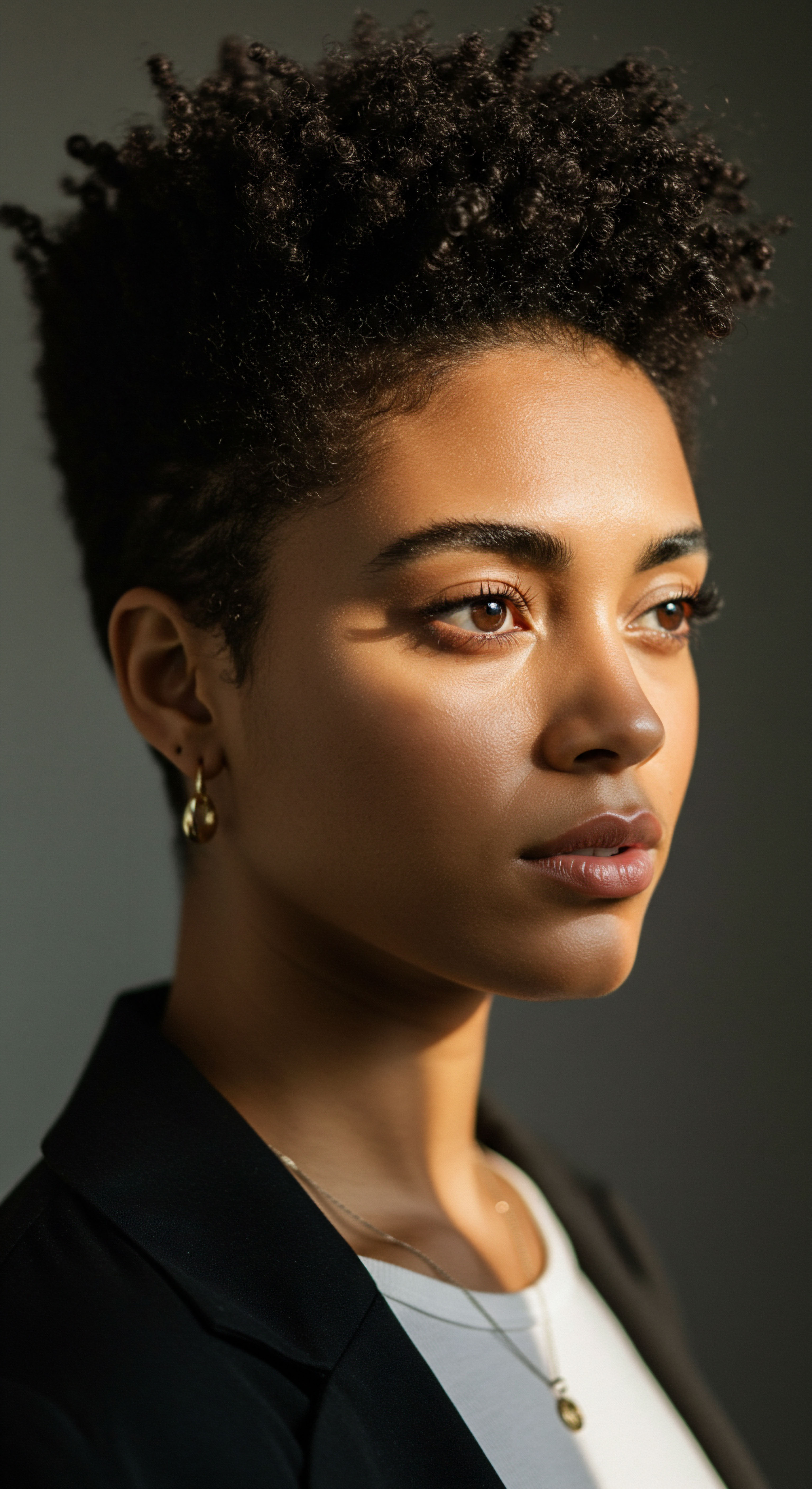
Protective Styling Under Coverings
Many individuals with textured hair rely on protective styles to shield their strands from daily manipulation and environmental exposure. Styles like braids, twists, cornrows, and buns are excellent choices for minimizing stress on the hair. However, when these styles are worn under head coverings, a new layer of consideration emerges.
For instance, tightly braided styles, while protecting the length of the hair, can already place significant tension on the scalp, particularly at the hairline. Adding a head covering made of a coarse fabric or one that requires constant readjustment can intensify this pressure. The ideal scenario involves pairing a well-executed protective style with a smooth, non-abrasive head covering.

What Makes a Head Covering Truly Hair-Kind?
Choosing a head covering that nurtures hair health involves a few key considerations:
- Smoothness ❉ The paramount quality is a smooth surface that allows hair to glide without snagging or abrading. Silk and satin are preferred choices for this reason.
- Breathability ❉ While smoothness is vital, the fabric should also allow for air circulation to prevent moisture buildup and scalp irritation.
- Fit ❉ The covering should be secure enough to stay in place without needing constant adjustment, yet loose enough to avoid creating tension points on the hairline or scalp. Elastic bands that are too tight or knots that pull on the hair can be problematic.
- Cleanliness ❉ Regularly washing head coverings removes product buildup, oils, and environmental debris that could otherwise contribute to friction or bacterial growth on the scalp.
By consciously selecting materials and minding the fit of our head coverings, we transform a simple act into a deliberate ritual of hair care, one that honors both tradition and trichological wisdom.

Relay
Having explored the inherent qualities of textured hair and the nuanced impact of daily head covering rituals, we now embark on a deeper consideration ❉ the intricate interplay of biology, culture, and individual practice that shapes the experience of hair health, particularly in the context of traction alopecia. This section delves into the less apparent complexities, drawing connections between scientific understanding and lived realities, revealing how a seemingly simple act like wearing a head covering can become a nexus of diverse influences. We seek to understand not only the ‘how’ but also the ‘why’ behind hair’s response to external pressures, acknowledging the profound significance hair holds within identity and well-being.

The Science of Strain ❉ How Tension Translates to Hair Loss
Traction alopecia, at its core, is a condition born of persistent mechanical stress on the hair follicle. Each hair follicle anchors its strand to the scalp. When a consistent pulling force is applied, whether from tight hairstyles, heavy extensions, or indeed, the sustained pressure of head coverings, the follicle experiences inflammation and trauma. Over time, this chronic inflammation can lead to follicular damage, fibrosis (scarring), and ultimately, the irreversible loss of the follicle’s ability to produce hair.
The mechanical properties of hair, especially textured hair, render it particularly susceptible. Textured hair, with its characteristic bends and twists, is inherently more prone to tangling and knotting. This can mean that when a head covering is removed or adjusted, any existing tangles can exacerbate the pulling force on the roots. Moreover, the unique structure of afro-textured hair, which often includes a flattened cross-section and a more fragile cuticle, can mean that it is less resilient to the repetitive friction and tension exerted by certain fabrics.
A study by Alhanshali et al. (2023) highlights this, noting that women with afro-textured hair possess fewer elastic fibers attaching hair follicles to the dermis compared to Caucasians, making them more vulnerable to traction from consistent, tight wrapping of headwear like hijabs.
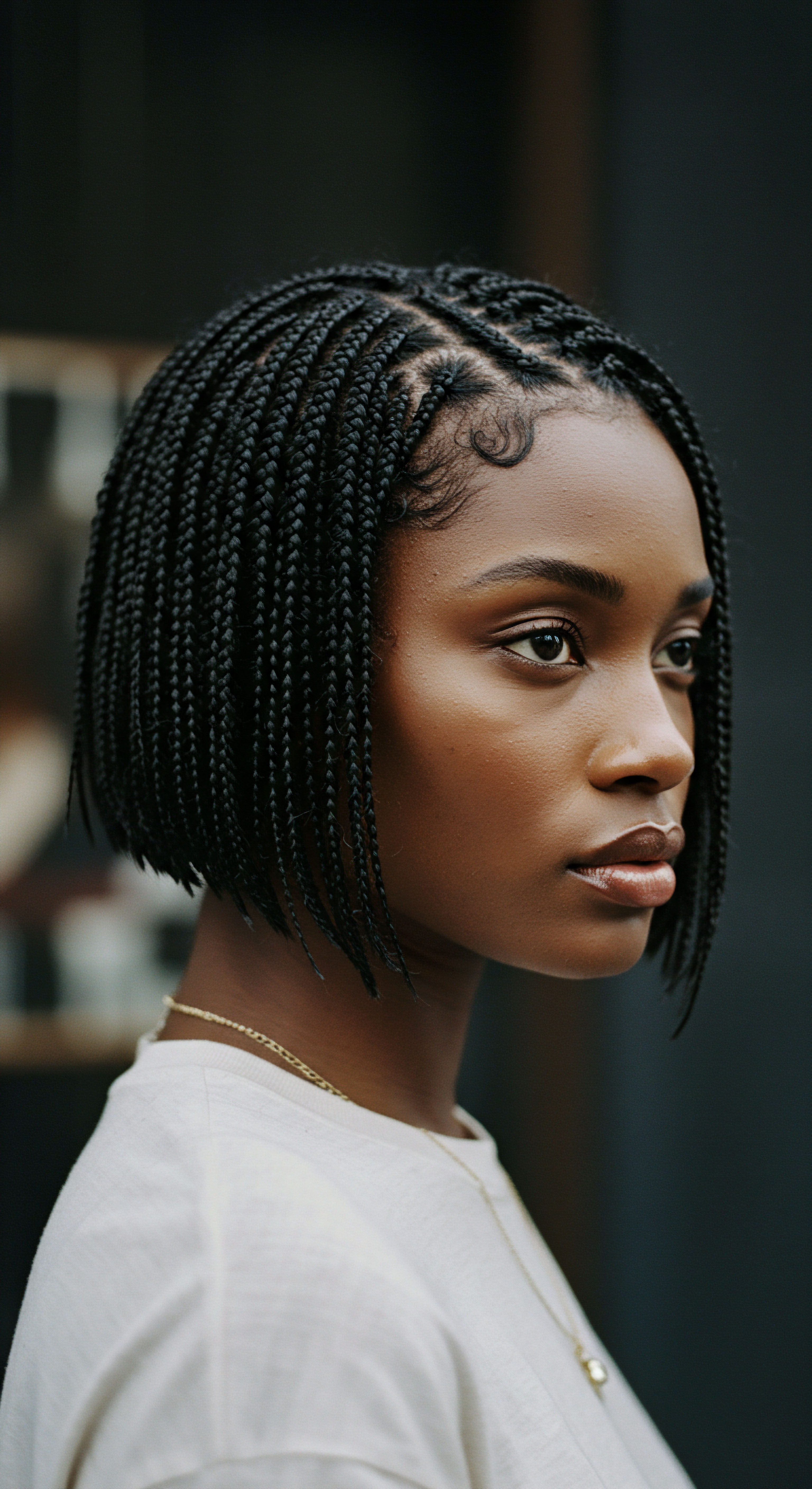
Beyond Friction ❉ The Role of Electrostatic Charge?
While friction is a primary mechanical concern, another subtle factor in the interaction between fabrics and hair is the generation of electrostatic charge. When two materials rub against each other, electrons can transfer, leading to a buildup of static electricity. Hair, particularly dry hair, can become positively charged, while certain fabrics, like polyester, tend to gain a negative charge. This electrostatic attraction can cause hair strands to repel each other, leading to increased frizz, tangling, and a greater propensity for breakage as strands cling and pull.
A study examining the friction coefficient and electrostatic charge of head scarf textiles found that polyester generated the highest voltage when slid against hair, followed by cotton and then nylon. Cotton also displayed a higher friction coefficient when slid against African hair compared to Asian hair, alongside higher generated voltage. This suggests that beyond mere physical abrasion, the electrical forces at play between hair and fabric can contribute to structural disruption and damage over time.
This electrical phenomenon is particularly pertinent for textured hair, which tends to be drier due to its structure, making it more susceptible to static buildup. The combination of mechanical friction and electrostatic forces creates a dual assault on the hair cuticle, accelerating its degradation.

Cultural Expressions and Hair Health
Head coverings carry profound cultural and religious significance across diverse communities globally. From the vibrant ‘geles’ of Nigeria to the ‘hijabs’ of Muslim women and the ‘turbans’ worn by Sikh men, these coverings are powerful symbols of identity, modesty, tradition, and even resistance. For instance, during the era of slavery in the United States, enslaved Black women transformed mandated headwraps into symbols of dignity and pride, reclaiming them as powerful emblems of resistance. This deep cultural resonance means that altering practices related to head coverings can carry significant social and personal implications.
This is where the intersection of cultural practice and trichological understanding becomes critical. For some, the adherence to specific head covering styles is non-negotiable due to religious tenets or cultural heritage. The challenge then becomes one of finding ways to honor these traditions while simultaneously safeguarding hair health. This might involve:
- Material Innovation ❉ Seeking out traditional styles crafted from modern, hair-friendly materials like silk-lined fabrics or specially treated low-friction blends.
- Under-Layering ❉ Utilizing a smooth, protective inner layer, such as a satin or silk bonnet, beneath a more traditional or textured outer covering.
- Styling Adaptations ❉ Opting for looser protective styles underneath the head covering, or adjusting the way the covering is secured to minimize tension on the hairline.
The intersection of cultural practices and hair science presents opportunities for thoughtful adaptations that honor both heritage and hair health.
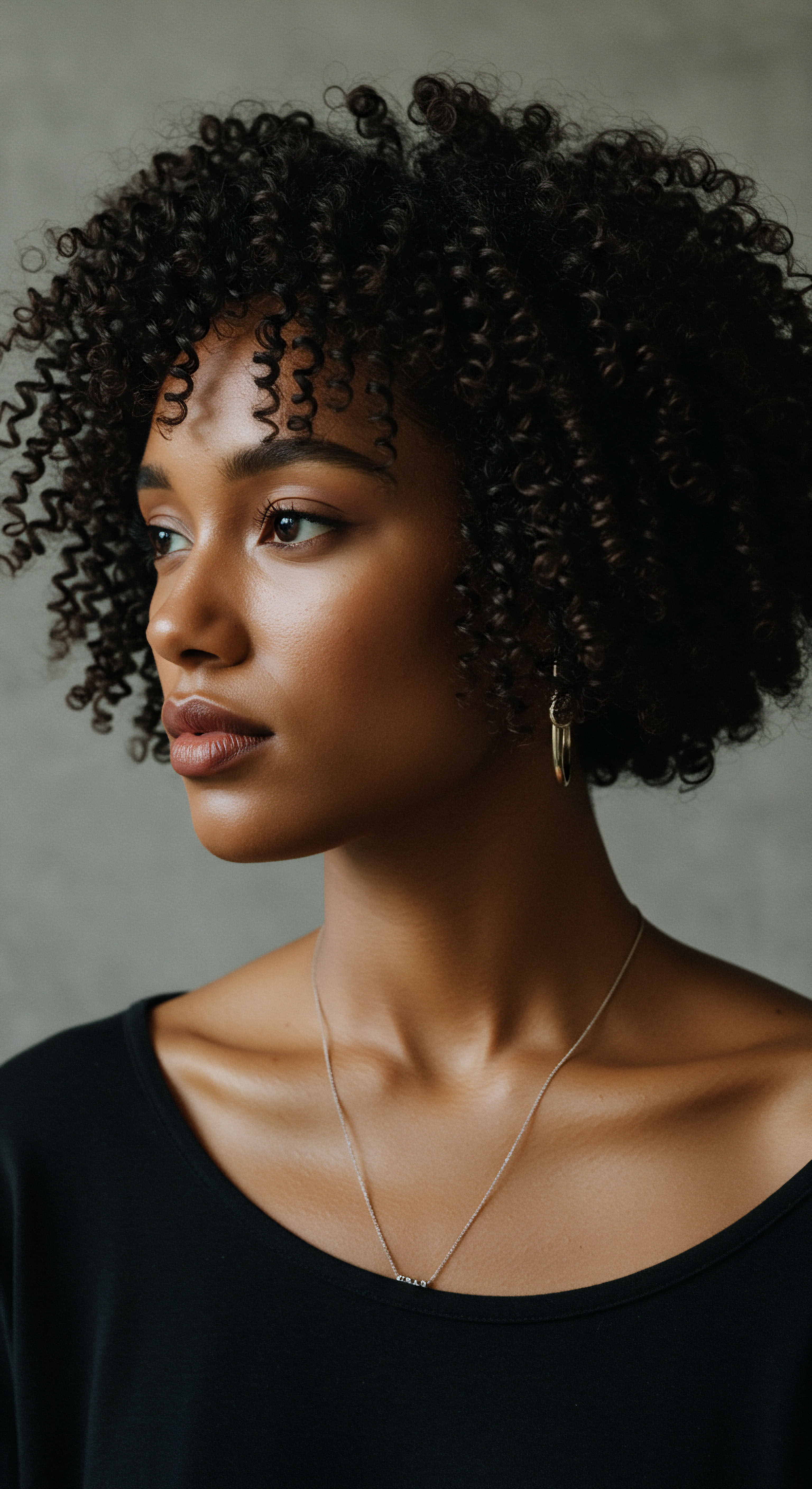
Can Psychological Stress Worsen Hair Loss from Head Coverings?
The relationship between hair loss and psychological well-being is deeply established. Hair holds significant social and personal importance, often tied to perceptions of beauty, youth, and identity. When individuals experience hair loss, particularly from conditions like traction alopecia, it can lead to considerable emotional distress, including embarrassment, low self-esteem, anxiety, and even depression.
This psychosocial burden can, in a vicious cycle, exacerbate the physical condition. While direct causation of traction alopecia by stress is not primary, stress can influence hair growth cycles and overall scalp health. Conditions like telogen effluvium, where significant stress pushes hair follicles into a resting phase, can be triggered by severe emotional distress. If an individual is already experiencing early stages of traction alopecia from head coverings, the added psychological stress of noticing hair thinning can potentially worsen general hair shedding or create a heightened awareness that leads to more manipulation of the affected areas, inadvertently increasing mechanical stress.
Moreover, for those whose head coverings are tied to their identity, the dilemma of managing hair loss without compromising cultural or religious observance can itself be a significant source of stress. This highlights the need for a holistic approach that considers not only the physical mechanics of hair and fabric but also the emotional and cultural landscape of the individual. Recognizing this complex interplay allows for more compassionate and effective strategies for hair preservation.
| Fabric Type Silk |
| Approximate Friction Coefficient (μ) with Hair 0.1 – 0.2 |
| Impact on Hair Cuticle Minimal abrasion, cuticle remains smooth |
| Fabric Type Satin (polyester) |
| Approximate Friction Coefficient (μ) with Hair 0.2 – 0.3 |
| Impact on Hair Cuticle Low abrasion, good cuticle preservation |
| Fabric Type Cotton |
| Approximate Friction Coefficient (μ) with Hair 0.4 – 0.6 |
| Impact on Hair Cuticle Moderate abrasion, cuticle lifting and damage |
| Fabric Type Polyester (non-satin) |
| Approximate Friction Coefficient (μ) with Hair 0.3 – 0.5 |
| Impact on Hair Cuticle Moderate abrasion, potential for static charge |
| Fabric Type Lower friction coefficients generally correlate with less hair damage. |
A compelling example of the impact of head coverings on hair health comes from a study focusing on Sikh males and the condition known as “turban alopecia.” This form of traction alopecia results from the consistent tension placed on the hair by the turban, or ‘dastar,’ which is a religiously mandated head covering. Researchers have noted that because the removal of the turban is religiously forbidden, the traction continues, often leading to persistent alopecia. This particular situation underscores the deep cultural and religious implications that can make treatment difficult, highlighting the necessity for culturally sensitive interventions and preventative measures that respect religious practices while prioritizing hair health. The challenge lies in finding solutions that mitigate mechanical stress without compromising deeply held beliefs.

Reflection
Our exploration of head covering fabrics and their connection to traction alopecia reveals a profound truth ❉ the world of hair health is rarely a simple equation. It is a vibrant, intricate ecosystem where biological predispositions meet cultural expressions, and daily choices hold long-term consequences. For those with textured hair, this journey is often marked by a unique blend of heritage, personal style, and a constant search for gentle care.
We have seen how the very structure of textured strands, with their delicate curves and cuticle formations, renders them particularly susceptible to external forces. The friction of certain fabrics, the subtle pull of a well-loved head covering, or even the unseen dance of electrostatic charges can cumulatively affect the vitality of our hair.
Yet, this understanding brings not limitation, but empowerment. It encourages a mindful approach to our rituals, inviting us to choose fabrics that caress rather than abrade, to style with a touch that honors the hair’s inherent strength, and to listen closely to the whispers of our scalp. The stories woven into our head coverings are rich and meaningful, and with thoughtful consideration, they can continue to be symbols of pride and protection, nurturing our hair’s well-being for generations to come. The delicate balance lies in merging ancestral wisdom with contemporary trichological insights, ensuring that every strand is cherished and every practice serves the radiant health it deserves.
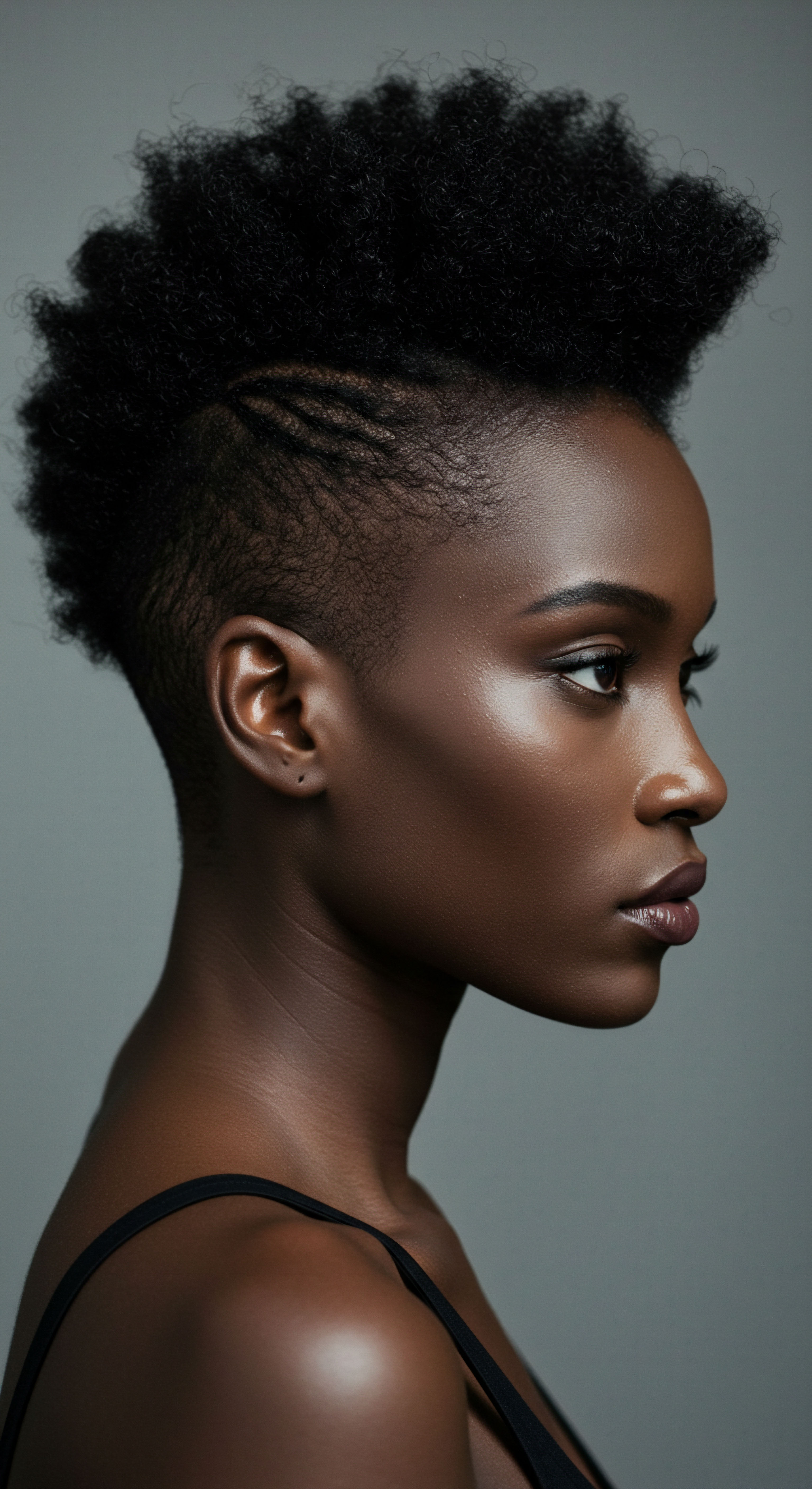
References
- El-Messiry, M. Hassan, A. & Elkashlan, M. (2017). Friction Coefficient and Electric Static Charge of Head Scarf Textiles. EKB Journal Management System .
- Alhanshali, H. Alhanshali, S. Alqassas, S. Alshammari, S. Aljaser, F. Aljaser, A. & Aljaser, M. (2023). Understanding perceptions of hair loss in hijab-wearing women ❉ a pilot survey study. International Journal of Women’s Dermatology .
- Abdel-Fattah, N. S. & Sharquie, K. E. (2019). Traction Alopecia ❉ Clinical and Cultural Patterns. Journal of Cosmetic Dermatology .
- Sharquie, K. E. & Noaimi, A. A. (2010). Turban Alopecia ❉ A New Type of Traction Alopecia. Journal of the Iraqi College of Medicine .
- Trueb, R. M. (2013). Hormonal Effects on Hair Follicles. International Journal of Molecular Sciences, 2020, 21(15), 5342.
- Goren, A. et al. (2020). Involvement of Mechanical Stress in Androgenetic Alopecia. International Journal of Trichology, 7(4), 137–141.
- Harrison, S. & Bergfeld, W. (2009). Diffuse Hair Loss ❉ Its Causes and Management. Dermatologic Clinics, 27(1), 1–11.
- McMichael, A. J. (2019). Hair and Scalp Disorders in Ethnic Populations. Taylor & Francis Group .
- Draelos, Z. D. (2011). Hair Cosmetics ❉ An Overview. Journal of Cosmetic Dermatology, 10(1), 3–11.
- Robbins, C. R. (2012). Chemical and Physical Behavior of Human Hair. Springer Science & Business Media .